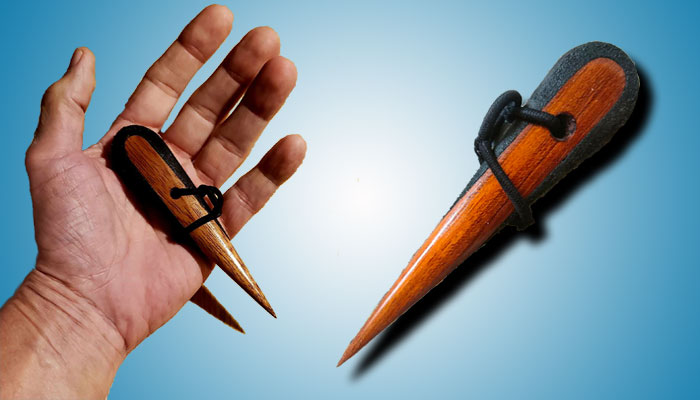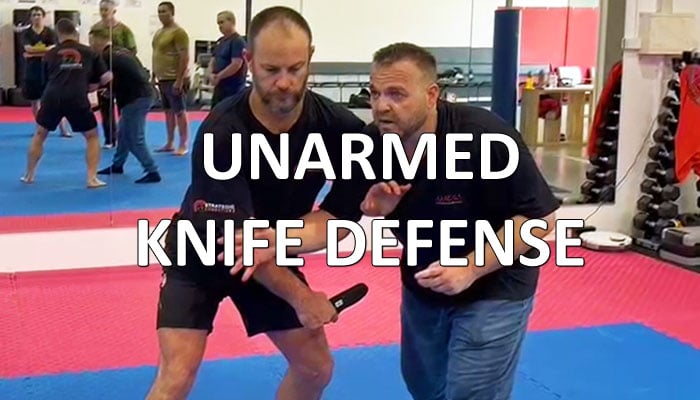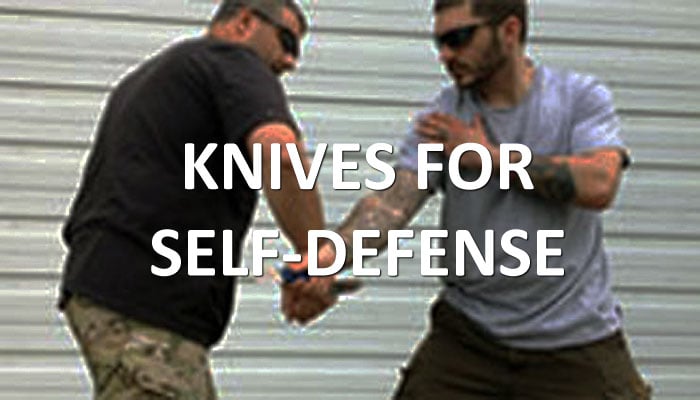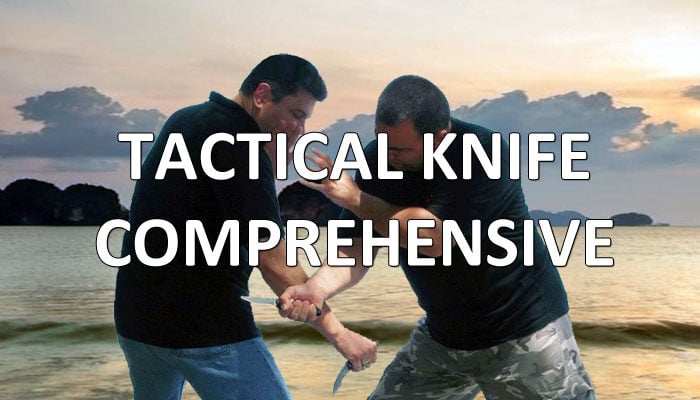
Flashlights
How to use an ultra-powerful flashlight to prevent or escape from an assault.

Pointed Objects
How to use a pointed instrument to prevent or escape from an assault.

Chemical Sprays
How to use chemical spray to prevent or escape from an assault.
Programs

Unarmed Knife Defense
Facing a knife attack when unarmed is perhaps the most challenging of all personal safety situations. Knife defense is a critical aspect of personal safety, involving techniques and strategies to protect yourself from potential harm in a knife attack. Effective knife defense emphasizes situational awareness, allowing you to identify potential threats, take preemptive measures when possible, and employ effective reactive measures when forced to defend oneself.
This program presents key principles that include:
- Recognition skills
- Preventive actions
- Protective actions from knife strikes
- Protective actions from grab-n-stab attacks
- How to injure your assailant without exchanging strikes
- How to catch an arm in motion
- Various means of grabbing
- Ways to force your assailant to release the knife
- Takedowns when they are appropriate
Developing proficiency in these skills empowers individuals to respond effectively in high-stress situations, prioritizing personal safety and minimizing the potential for harm.

Knife for Self Defense
This program aims to achieve the best possible outcomes in violent circumstances. To do that, we must become tactically sound and legally defensible from criminal prosecution and civil suits. This program covers three phases of self-defense: Preparation before an attack, self-defense when under attack, and post-incident protocols after an attack.
- Considerations on using a knife for self-defense
- Reasonable use of force
- De-escalating conflicts
- Managing challengers
- Confrontations with criminals
- Knife types and selection
- How to draw, deploy, and handle a knife
- How to strike in forward hold
- How to strike in reverse hold
- How to access during unarmed attacks
- How to access during knife attacks
- How to access during grab-n-stab style of attacks
- Defensive use of the knife in a forward hold
- Defensive use of the knife in a reverse hold
- What to do immediately following an attack and
- What to do if you are arrested for defending yourself

Tactical Knife - Core Skills
Unlike dance-like methods using flowy drills that don’t resemble fighting, AMOK! activities are fight-based with broken rhythm and true intention – just as in real fights. It goes against the logic and purpose of training to practice in ways that don’t resemble the actual event. This program presents the five vital activities over 30 lessons and covers:
- Tactics – attacking, countering, isolations, and unpredictability
- Dueling – Paying tactical consequences for mistakes
- Sparring – dueling in different configurations for adaptation
- Practice – activities to improve your functional skill
- Training – activities to improve your physical attributes

Tactical Knife - Comprehensive
AMOK!’s Comprehensive Knife Fighting program will teach you how to dominate and gain control in chaos and train you to become functional faster than any other method. This program contains everything in the Core Skills program plus fourteen additional tactical skills.
The course covers the following tactics:
Handling –how to carry, draw, deploy, and handling techniques
Gripping - the pros and cons of different grips
Striking - how to strike in forward and reverse hold
Accessing – safely draw & deploy while under attack
Tactics –attacking, countering, isolations, and unpredictability
Dueling – Paying tactical consequences for mistakes
Sparring –dueling in different configurations for adaptation
Practice– activities to improve your functional skill
Training– activities to improve your physical attributes
Footwork –gaining advantages through counter-footwork
Countering – detailed progression of counter-striking
Reverse Hold– details on the particulars of reverse grip
Impact Striking– adding hand strikes and kicks into your knifework
Quartering– tactics for controlling position: inside/outside, high/low
Set-ups – setting Up functional bridge traps
Timing Traps– exploiting opportunities during free exchange striking
Adaptation– managing a spontaneous environment
Disarming – catching a moving hand and causing them to release the knife
Takedowns– using your knife to assist or effect takedowns
